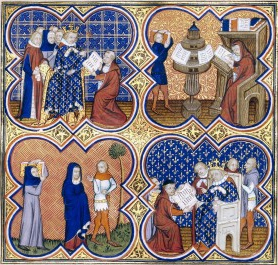|
IdiomaX
IdiomaX LLC is a translation software company that has been offering translation products and services for the international market since 1996. History IdiomaX was established in 1996. Its team of specialists in natural language and applied computing creates software products that go beyond word-by-word translation, instead recognizing grammatical rule, patterns, and idiomatic expressions to deliver more accurate language translations. In 1998, after launching the IdiomaX Translator, IdiomaX developed a dedicated PC Translator for Garzanti (between Italian and the main EU languages) that was distributed directly by Garzanti in Italian bookstores for several years. In 2005, IdiomaX started to sell on the Italian market with the IdiomaX brand “Traduttore Plurilingue IdiomaX” distributed by DLI Multimedia. Starting from 2001, IdiomaX distributed its full range of products internationally via the website www.idiomax.com and via on-line distributors. IdiomaX Products Idi ... [...More Info...] [...Related Items...] OR: [Wikipedia] [Google] [Baidu] |
Translation Software
Machine translation, sometimes referred to by the abbreviation MT (not to be confused with computer-aided translation, machine-aided human translation or interactive translation), is a sub-field of computational linguistics that investigates the use of software to translate text or speech from one language to another. On a basic level, MT performs mechanical substitution of words in one language for words in another, but that alone rarely produces a good translation because recognition of whole phrases and their closest counterparts in the target language is needed. Not all words in one language have equivalent words in another language, and many words have more than one meaning. Solving this problem with corpus statistical and neural techniques is a rapidly growing field that is leading to better translations, handling differences in linguistic typology, translation of idioms, and the isolation of anomalies. Current machine translation software often allows for customizatio ... [...More Info...] [...Related Items...] OR: [Wikipedia] [Google] [Baidu] |
Translation
Translation is the communication of the Meaning (linguistic), meaning of a #Source and target languages, source-language text by means of an Dynamic and formal equivalence, equivalent #Source and target languages, target-language text. The English language draws a terminology, terminological distinction (which does not exist in every language) between ''translating'' (a written text) and ''Language interpretation, interpreting'' (oral or Sign language, signed communication between users of different languages); under this distinction, translation can begin only after the appearance of writing within a language community. A translator always risks inadvertently introducing source-language words, grammar, or syntax into the target-language rendering. On the other hand, such "spill-overs" have sometimes imported useful source-language calques and loanwords that have enriched target languages. Translators, including early translators of sacred texts, have helped shape the very l ... [...More Info...] [...Related Items...] OR: [Wikipedia] [Google] [Baidu] |
Natural Language
In neuropsychology, linguistics, and philosophy of language, a natural language or ordinary language is any language that has evolved naturally in humans through use and repetition without conscious planning or premeditation. Natural languages can take different forms, such as speech or signing. They are distinguished from constructed and formal languages such as those used to program computers or to study logic. Defining natural language Natural language can be broadly defined as different from * artificial and constructed languages, e.g. computer programming languages * constructed international auxiliary languages * non-human communication systems in nature such as whale and other marine mammal vocalizations or honey bees' waggle dance. All varieties of world languages are natural languages, including those that are associated with linguistic prescriptivism or language regulation. ( Nonstandard dialects can be viewed as a wild type in comparison with sta ... [...More Info...] [...Related Items...] OR: [Wikipedia] [Google] [Baidu] |
Applied Computing
Computing is any goal-oriented activity requiring, benefiting from, or creating computing machinery. It includes the study and experimentation of algorithmic processes, and development of both hardware and software. Computing has scientific, engineering, mathematical, technological and social aspects. Major computing disciplines include computer engineering, computer science, cybersecurity, data science, information systems, information technology and software engineering. The term "computing" is also synonymous with counting and calculating. In earlier times, it was used in reference to the action performed by mechanical computing machines, and before that, to human computers. History The history of computing is longer than the history of computing hardware and includes the history of methods intended for pen and paper (or for chalk and slate) with or without the aid of tables. Computing is intimately tied to the representation of numbers, though mathematical concepts ... [...More Info...] [...Related Items...] OR: [Wikipedia] [Google] [Baidu] |
Grammatical Rule
In linguistics, the grammar of a natural language is its set of structural constraints on speakers' or writers' composition of clauses, phrases, and words. The term can also refer to the study of such constraints, a field that includes domains such as phonology, morphology, and syntax, often complemented by phonetics, semantics, and pragmatics. There are currently two different approaches to the study of grammar: traditional grammar and theoretical grammar. Fluent speakers of a language variety or ''lect'' have effectively internalized these constraints, the vast majority of which – at least in the case of one's native language(s) – are acquired not by conscious study or instruction but by hearing other speakers. Much of this internalization occurs during early childhood; learning a language later in life usually involves more explicit instruction. In this view, grammar is understood as the cognitive information underlying a specific instance of language production. T ... [...More Info...] [...Related Items...] OR: [Wikipedia] [Google] [Baidu] |
Idiom
An idiom is a phrase or expression that typically presents a figurative, non-literal meaning attached to the phrase; but some phrases become figurative idioms while retaining the literal meaning of the phrase. Categorized as formulaic language, an idiom's figurative meaning is different from the literal meaning. Idioms occur frequently in all languages; in English alone there are an estimated twenty-five million idiomatic expressions. Derivations Many idiomatic expressions were meant literally in their original use, but sometimes the attribution of the literal meaning changed and the phrase itself grew away from its original roots—typically leading to a folk etymology. For instance, the phrase "spill the beans" (meaning to reveal a secret) is first attested in 1919, but has been said to originate from an ancient method of voting by depositing beans in jars, which could be spilled, prematurely revealing the results. Other idioms are deliberately figurative. For example, " brea ... [...More Info...] [...Related Items...] OR: [Wikipedia] [Google] [Baidu] |
Bookstore
Bookselling is the commercial trading of books which is the retail and distribution end of the publishing process. People who engage in bookselling are called booksellers, bookdealers, bookpeople, bookmen, or bookwomen. The founding of libraries in c.300 BC stimulated the energies of the Athenian booksellers. History In Rome, toward the end of the republic, it became the fashion to have a library, and Roman booksellers carried on a flourishing trade. The spread of Christianity naturally created a great demand for copies of the Gospels, other sacred books, and later on for missals and other devotional volumes for both church and private use. The modern system of bookselling dates from soon after the introduction of printing. In the course of the 16th and 17th centuries the Low Countries for a time became the chief centre of the bookselling world. Modern book selling has changed dramatically with the advent of the Internet. Major websites such as Amazon, eBay, and other big ... [...More Info...] [...Related Items...] OR: [Wikipedia] [Google] [Baidu] |
DLI Multimedia
DLI may refer to: * Daily light integral, the number of photons received in an area * Defense Language Institute of the US DoD * Delhi Junction railway station (station code DLI) * Durham Light Infantry, UK * Donor lymphocyte infusion, immunotherapy * Delay line interferometer * Digital Library of India * Department of Land Information, Western Australia * Data Language Interface (DL/I) to IBM's IMS databases * 551 __NOTOC__ Year 551 ( DLI) was a common year starting on Sunday (link will display the full calendar) of the Julian calendar. The denomination 551 for this year has been used since the early medieval period, when the Anno Domini calendar era beca ... in Roman numerals * Lien Khuong Airport IATA code * Dysfunctional Lens Index a measure for cataract diagnosis {{disambiguation ... [...More Info...] [...Related Items...] OR: [Wikipedia] [Google] [Baidu] |
Distributor
A distributor is an enclosed rotating switch used in spark-ignition internal combustion engines that have mechanically timed ignition. The distributor's main function is to route high voltage current from the ignition coil to the spark plugs in the correct firing order, and for the correct amount of time. Except in magneto systems and many modern computer controlled engines that use crank angle/position sensors, the distributor also houses a mechanical or inductive breaker switch to open and close the ignition coil's primary circuit. The first reliable battery operated ignition was the Delco ignition system developed by Dayton Engineering Laboratories Co. (Delco) and introduced in the 1910 Cadillac Model 30. This ignition was developed by Charles Kettering and was considered a wonder in its day. Atwater Kent invented his Unisparker ignition system about this time in competition with the Delco system. By the end of the 20th century mechanical ignitions were disappea ... [...More Info...] [...Related Items...] OR: [Wikipedia] [Google] [Baidu] |
Windows OS
Windows is a group of several proprietary graphical operating system families developed and marketed by Microsoft. Each family caters to a certain sector of the computing industry. For example, Windows NT for consumers, Windows Server for servers, and Windows IoT for embedded systems. Defunct Windows families include Windows 9x, Windows Mobile, and Windows Phone. The first version of Windows was released on November 20, 1985, as a graphical operating system shell for MS-DOS in response to the growing interest in graphical user interfaces (GUIs). Windows is the most popular desktop operating system in the world, with 75% market share , according to StatCounter. However, Windows is not the most used operating system when including both mobile and desktop OSes, due to Android's massive growth. , the most recent version of Windows is Windows 11 for consumer PCs and tablets, Windows 11 Enterprise for corporations, and Windows Server 2022 for servers. Genealogy By marketing ... [...More Info...] [...Related Items...] OR: [Wikipedia] [Google] [Baidu] |
Symbian S60
The S60 Platform (formerly Series 60 User Interface) was a platform (computing), software platform for Mobile app, smartphones that runs on top of the Symbian operating system. It was created by Nokia based on the 'Pearl' user interface from Symbian Ltd. It was introduced at COMDEX in November 2001 and first shipped with the Nokia 7650 smartphone. The platform has since seen 5 updated editions. Series 60 was renamed to ''S60'' in November 2005. In 2008, the Symbian Foundation was formed to consolidate all the assets of different Symbian platforms (S60, UIQ, MOAP), making it Open-source software, open source. In 2009, based on the code base of S60, the first iteration of the platform since the creation of Symbian Foundation was launched as S60 5th Edition, or Symbian^1, on top of Symbian OS#Symbian OS 9.4, Symbian OS 9.4 as its base. Subsequent iterations were named Symbian^2 (Japanese market only) and Symbian^3. The S60 software was a multivendor standard for smartphones that ... [...More Info...] [...Related Items...] OR: [Wikipedia] [Google] [Baidu] |




